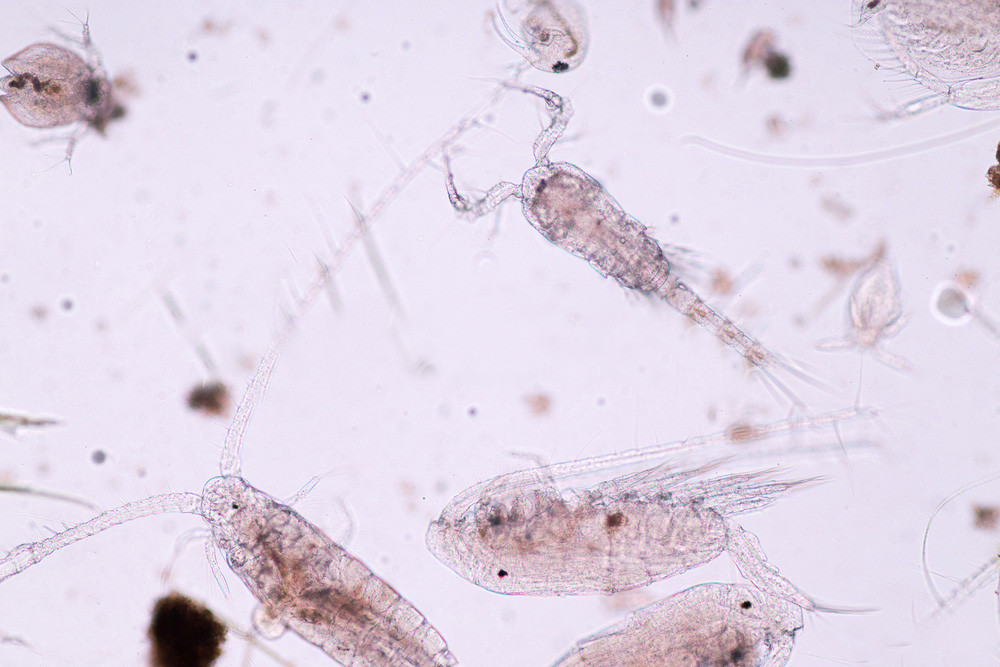The Importance of Copepods and Other Microfauna

Copepods. What are they?
Often times, what we cannot see, or what remains cryptic, is as important as to your saltwater aquariums confined ecosystem as the obvious visual observations you can make. The first thing that comes to mind is water quality; like the dissolved organics, your skimmer should be pulling out. A close second, however, is the micro-fauna life in your tank, specifically a reef tank. Copepods are micro-crustaceans closely related to shrimp. Looks-wise, many would refer to them as looking insect or flea like. Though some species are extremely small, you can still typically view them with the naked eye due to their high activity level. This task is often easier during the dawn, dusk, or non-photo periods of your aquarium lighting schedule.
Copepods are friends…but also food.
New aquarists often times have a near panic-attack when noticing copepods in their aquarium for the first time. They are making the assumption that they are a pest, but this could not be further from the truth. They are an integral part of the ocean's food chain and have been found nearly everywhere in every ocean, in numbers so large it's impossible to count. It's importance to the food supply of the ocean rivals that of antarctic krill. Hopefully this gives the impression that not only are copepods harmless but are an ideal foundation for the nutritional needs of your marine aquarium. Benthic copepods are all that some fish species will consume when first introduced, as they haven't always had the time in transit to be properly weened onto frozen foods.
Copepods make great housekeepers for your aquarium.
Not only are copepods an extremely nutritious food for your aquarium, but they make great detritivores. Put simply, they can get to cryptic spaces and crevices that your larger cleanup crew critters can't quite reach. A single copepod can eat tens to hundreds of thousands of diatoms in a twenty-four hour period. If your aquarium is low on dissolved organics, and heavy or multiple feedings do not occur daily, you can supplement a copepod diet with a live micro-algae solution. As even most benthic copepods have a planktonic stage where they are living in the water column, micro-algae is necessary to encourage large population growth.
Adding Copepod cultures to your aquarium.
Copepods are both pelagic (free-swimming) and benthic (cryptic/bottom dwellers). In the past, they were most frequently added to aquariums through live-rock and live-sand. The hobby seems to have moved on for the most part, preferring more ecologically harvested or man-made that is sterile. This also helps to limit the introduction of unwanted ocean denizens and pests (such as small mantis-shrimp). Due to this it's often necessary and encouraged to add a culture of copepods to your aquarium. This is done in several ways, though initially it's recommended to add them to your aquarium after they cycle is complete but ideally before you add tons of reef creatures, especially smaller wrasses, dragonettes and even other benthic feeders like gobies. Another ideal solution is to add copepods to a refugium, these are typically separate from the display ago grow macroalgae as a means for nutrient export. It's also an optimal place for copepods to breed and grow out before being carried by your circulation pump into the main tank. There are many species of copepods that we will cover some in our next blog post, they come in multiple sizes and nutritional profiles, though diversity is key.